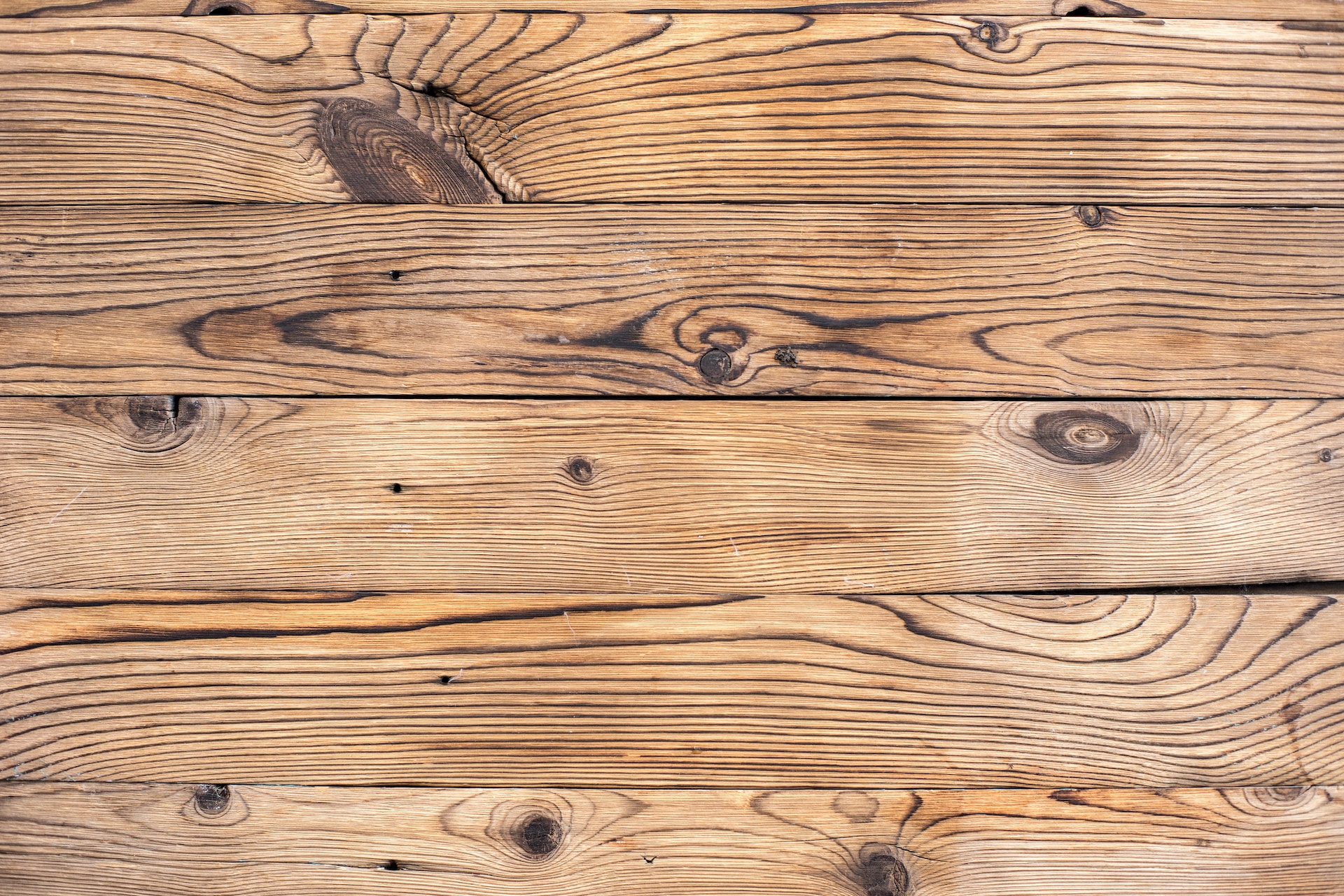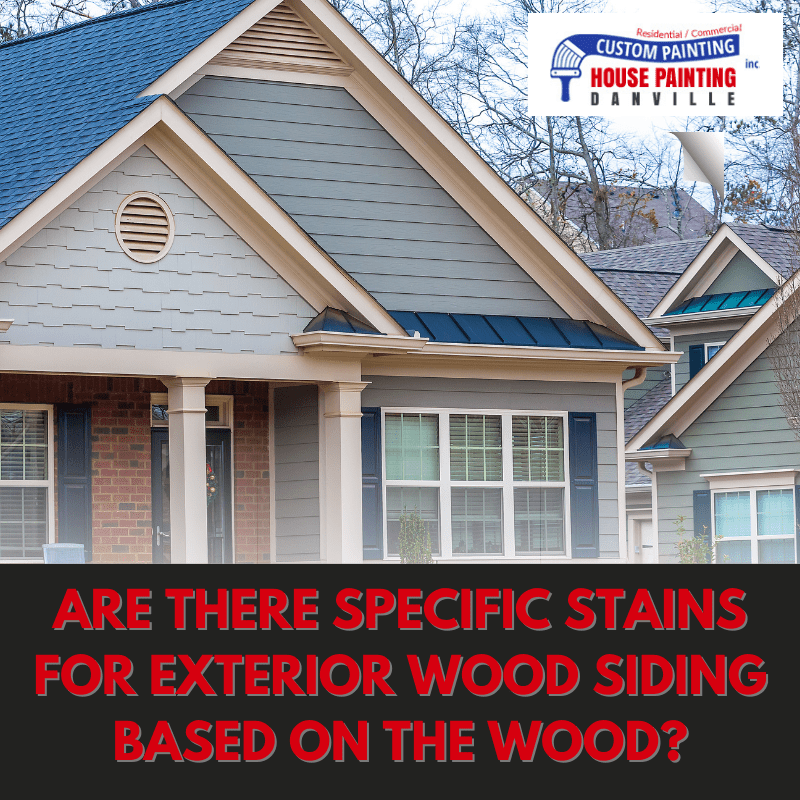Wood siding’s natural aesthetics and versatility make it a popular choice among Alamo, CA area homeowners. However, the key to preserving and enhancing the beauty of wood siding lies in applying the right stain. Stains help protect the wood and display its unique characteristics. But are there specific stains for exterior wood siding based on the wood? Be sure to also consider if you need deck staining done as well to match the different areas.
In this article, we will dive into the world of wood siding, exploring various wood types, the factors influencing stain choice, the types of stains, and how to match the perfect stain to different wood types.
Wood Types for Exterior Siding

Selecting the right wood type for your exterior siding is a fundamental decision that can greatly impact your home’s aesthetics, durability, and overall performance. Each type brings its own unique characteristics, making it essential to choose wisely.
Cedar
Cedar is popular due to its natural durability and resistance to decay, insects, and moisture. It features a distinct reddish-brown hue and a pronounced grain pattern, adding to its visual appeal.
It’s a versatile wood that can be stained or painted to achieve the desired look, making it a favorite among homeowners.
Ash
Ash is a hardwood known for its strength and durability, making it a reliable choice for exterior siding. Its sturdy nature allows it to withstand various weather conditions.
Ash is also versatile and relatively easy to work with, allowing for different siding styles and finishes.
Pine
Pine is a cost-effective and widely available wood that accepts stains well, providing options for various finishes. It’s easy to cut, shape, and install, which makes it a favorite among DIY enthusiasts.
However, being softer than hardwoods, pine is more susceptible to dents and scratches and requires proper maintenance for long-term durability.

Birch
Birch offers a smooth and elegant finish, ideal for achieving a polished look on your home’s exterior. It takes stains well, allowing for a variety of color options. While it may not be as durable as some other types of wood, proper maintenance can ensure its longevity and beauty.
Redwood
Redwood stands out for its exceptional durability and natural resistance to insects and decay. The wood’s color varies from a light pinkish hue to a deep reddish-brown, adding to its attractiveness.
Although it tends to be more expensive, its longevity and aesthetic appeal make it a worthy investment.
Chestnut
Chestnut is known for its warm, rich color, making it an appealing choice for siding. It also possesses a natural resistance to decay. However, chestnut wood is less common and might be more challenging to source compared to other wood types.
Factors that Influence Stain Choice
Selecting the appropriate stain involves more than just picking a color. Here are key factors to consider that impact your stain choice:
Porosity
Porosity is how much material, like wood, can absorb or soak up liquids, like stains. Think of it like a sponge – some woods soak up a lot, while others just soak up a little. Different wood types have varying levels of porosity. For instance, softer woods like pine tend to be more porous, absorbing stains more readily. Hardwoods like oak, on the other hand, are less porous.
Density
Dense wood, like oak or hickory, may require a stain with higher pigmentation to achieve the desired color, as it may not absorb stains as readily. Less dense woods, such as cedar or pine, can absorb stains more easily, impacting how the color appears.
It’s important to choose a stain that works well with the density of the specific wood to achieve the desired depth of color and coverage.

Natural Oils and Resins
The presence of natural oils and resins in wood can significantly affect how the wood absorbs stains. Woods like cedar and redwood contain natural oils that enhance their durability and resistance to decay. However, these oils can also repel water-based stains, affecting how the stain adheres. In such cases, oil-based stains might be more effective.
Types of Exterior Wood Stains
1. Transparent Stains
Transparent stains allow the natural beauty of the wood to shine through. They provide a subtle tint, enhancing the wood’s grain and texture while offering minimal color change.
Transparent stains are an excellent choice if you want to preserve the natural aesthetics of the wood while providing basic protection against UV rays and moisture.
2. Semi-Transparent Stains
Semi-transparent stains offer a balance between color and displaying the wood’s natural features. They provide a moderate level of pigmentation, enhancing the wood’s color and texture.
While the grain is still visible, these stains add a more noticeable color to the wood, offering enhanced protection against UV rays and moisture compared to transparent stains.

3. Solid Stains
Solid stains provide the most coverage and color change. They conceal the wood’s natural color and grain, offering a uniform appearance.
Solid stains are an excellent choice for older or heavily weathered wood, as they can cover imperfections effectively. They provide robust protection against UV rays, moisture, and other elements, making them ideal for high-wear areas.
4. Semi-Solid Stains
Semi-solid stains fall between semi-transparent and solid stains in terms of coverage and color intensity.
They allow some of the wood’s texture and grain to show through while providing more color than semi-transparent stains. These stains offer enhanced protection against UV rays, moisture, and mildew.

Matching Stain to Wood Type
Different wood types possess unique characteristics, and understanding how stains interact with these traits is crucial. Here’s are some key pointers on matching the right stain to specific wood types:
1. Cedar and Redwood
Cedar and redwood are naturally beautiful with attractive grains and hues. Using transparent or semi-transparent stains allows their natural beauty to shine through while providing protection against moisture and UV rays.
Best Stain Types: Transparent or Semi-Transparent Stains
2. Pine
Pine is a softer wood with a more porous structure. Semi-transparent stains enhance the wood’s grain while providing moderate protection. If you seek a bolder, consistent color or if the pine has imperfections, a solid stain can provide a more uniform appearance and better protection.
Best Stain Types: Semi-Transparent or Solid Stains
3. Oak
Oak is a hardwood with a tighter grain structure. Semi-transparent or semi-solid stains work well as they enhance the wood’s natural beauty by allowing the grain to show through. They provide a balance between color and showcasing the wood’s texture.
Best Stain Types: Semi-transparent or Semi-Solid Stains
4. Exotic Hardwoods
Exotic hardwoods like ipe or mahogany have unique, rich colors and grains. Using transparent stains or clear sealers allows the natural beauty of these woods to be the focal point.
Best Stain Types: Transparent Stains or Clear Sealers
5. Engineered Wood
Engineered wood can mimic the look of natural wood but often has a different texture. Semi-transparent stains can enhance the wood-like appearance, while solid stains provide uniformity and protection.
Best Stain Types: Semi-Transparent or Solid Stains

Conclusion
Selecting the right stain for your exterior wood siding is a critical decision for anyone looking to enhance its beauty and longevity. Different wood types have unique characteristics, making it essential to choose the appropriate stain that complements and protects them.
Understanding the factors that influence stain choice is key to making an informed decision. Consulting with professionals in the field can provide valuable insights and ensure you choose the right stain.
So, embrace the beauty of wood siding and let the right stain elevate it to new heights of elegance and durability. If you are in need of exterior wood staining for your home, do not hesitate to give us a call at 925-866-9610 or message us here. Our team with over 40 years experience will help you transform your space with expert painting solutions tailored to your needs.




